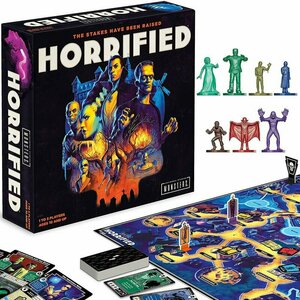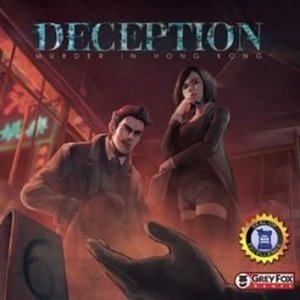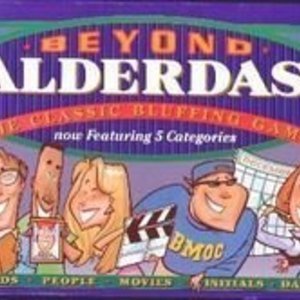
Forest Fighters
Tabletop Game
A deck building game that centers around tribes of squirrels harvesting acorns in preparation for...
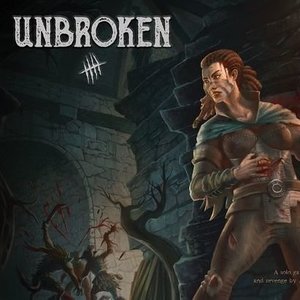
Unbroken
Tabletop Game
Not all adventures end well. Some groups meet their untimely demise at the hands of monsters all too...
Boardgames PrintandPlayGames 1playergames
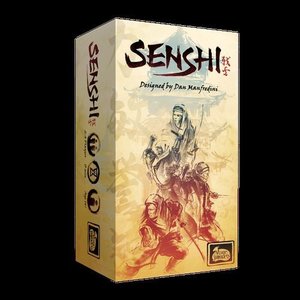
Senshi
Tabletop Game
You are a senshi, a warrior-monk studying diligently at the temple under the tutelage of the current...
BoardGames 2018Games
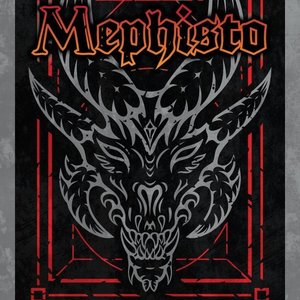
Mephisto: The Card Game
Tabletop Game
In Mephisto: The Card Game you play as one of the power hungry adventurers who has made a pact with...

Micro Dojo
Tabletop Game
In Micro Dojo, you represent one of two Daimyos who have been tasked by the Shogun to bring...
Purple Phoenix Games (2266 KP) rated Horrified: Universal Monsters Strategy Board Game in Tabletop Games
Aug 6, 2021
Horrified is a pickup and deliver, action points, cooperative game with dice and miniatures utilizing a variable setup. In it players take on the role of a hero in a monster movie – but not just A monster movie, but SEVERAL monsters will be haunting the town! It is the heroes’ goal to defeat the monsters before the Terror Marker reaches maximum or the heroes run out of time and the monsters take over the town.
To setup, place the board on the table and draw 12 Item tokens from the bag. Place these Items on the board in the specified location printed on the Item. Depending on how many players (for this review I will be using the Solo rules in the rule book) place the Terror Marker appropriately on the board – the photo above was taken before I realized that it starts on three in the Solo game. Choose the monsters to be faced and place their mats near the board. The rulebook states where the monster minis will start the game. Place the Frenzy token on the lowest Frenzy-numbered monster. Shuffle the Monster and Perk decks of cards separately and deal each player one Perk card. Each player chooses or is randomly dealt a character badge and places the standee in the appropriate location on the board. The game may now begin!
Players will be taking turns traveling the town, picking up Items, attempting to defeat the monsters per their defeat instructions on their mats, delivering villagers that randomly appear to their safe locations, and keeping the Terror Marker in the acceptable range. Each character has a certain number of actions that can be taken on their turns, but any Perk cards used are spent as a bonus action on the hero’s turn. The hero actions are: Move (one space along the lit pathways, even with a villager in tow), Guide (a villager one space away from the hero), Pick Up (Items from locations), Share (Items from player to player – not needed in a Solo game), Special Action (if the character being played has one on their badge), Advance (complete a task on the Monster mat to move one step closer to defeat), and Defeat (once all the tasks are complete and the player has enough Items to defeat the Monster at the same location). Once a hero has used up all their Action Points per their badge, it will be the Monster phase.
Monster phases begin with a draw from the Monster deck. Upon the card will be a number printed on the top which instructs players as to how many Items to draw and place from the bag. Next, players will read the text on the card and complete any instructions. Finally, the Monsters will strike. At the bottom of the card will be printed several icons pertaining to Monsters individually and also the Monster who happens to currently be Frenzied. These icons instruct players to move certain Monsters and if they share a space with a hero or villager, to roll the attack dice. One hit from a Monster defeats either a villager or hero (unless the hero discards any Item to block the attack). If a hero or villager is defeated, the Terror Marker moves up a space toward ultimate doom. Play then is passed to the players again. The game continues in this fashion until one of the game end conditions is met and the heroe(s) win or the Monsters succeed in their hostile haunted takeover.
Components. I’d like to start with the art. I love it. The art has a very 1930s Hollywood style and is simply beautiful. The colors are vibrant, where color is used, and the board is stunning. All of the cardboard components are top notch quality, and the Monster minis are fab. Obviously it would be great for all the heroes and villagers to have minis as well, but there is text printed on those standees that just can’t translate to a miniature. All in all, the components here are wonderful and high quality.
The gameplay is also wonderful and high quality. The solo game from which these photos are taken I randomly drew the Mayor character and decided to hit the town with Dracula, The Creature from the Black Lagoon, and The Invisible Man. That’s a Standard game in the rules. The Mayor is great because she is able to take five actions on her turn (plus Perks), but she has no special abilities. That is both a blessing and a curse and wonderfully balanced. I would say I finished the game needing just one or two more Monster cards to draw before all three baddies were defeated. But, that’s the difficulty of having three Monsters showing. With just two Monsters I would have won handily, but maybe would not have enjoyed it as much and written it off as too easy. Luckily I always learn games on normal standard difficulty first.
Traipsing around town picking up Items and ushering villagers to their safe spaces sounds relaxing, but when the Monsters are on your trail and ready to Strike it adds a layer of anxiety that is just delicious. I admit I probably spent too much time trying to save every villager and that’s partly why I failed at this one game. Also I miscalculated how many extra Items to have on hand when attempting to Advance the Monster tasks. Couple those with my strategy to concentrate on defeating one Monster at a time and, well, that’s a losing strategy it seems.
The gameplay is so much fun, and the components are so wonderful to play with, it’s really no surprise I enjoy this game as much as I do. I have purposely left out some rules for readers to enjoy discovering themselves, but this is a tight game with pressure from different fronts to complete objectives. It’s the kind of game where even with a loss you find yourself wanting to try again right away. And that’s a sing of an excellent game. Purple Phoenix Games gives this very high ratings, even as a solo experience. If you need more horror-style adventure games in your collection, please check out Horrified. It’s not really that scary to play, but you will certainly be haunted by your choices you make throughout the game.
Purple Phoenix Games (2266 KP) rated Deception: Murder in Hong Kong in Tabletop Games
Jun 12, 2019
MURDER! As an Investigator, that’s just another day on the job for you. This time feels different, though. Something about this case is off… After the initial evidence is gathered, the team’s Forensic Scientist has disclosed to the team that the killer is one of the Investigators! Everyone is on edge, accusing every other Investigator of being the murderer. Everyone had potential means and motive, and it is up to you to figure it out! As the Forensic Scientist uncovers more evidence, the details of the crime will come to light, and the killer will be revealed. Put your investigative and deductive skills to the test as you try to unmask the killer, or throw the team off your scent if you are the culprit!
DISCLAIMER!! This review is for vanilla Deception: Murder in Hong Kong. We have plans to add in the expansion once one of us purchases it and learns it and teaches it to the rest of us. Should that happen and our review change, we will add that information to this review or to a new review and link to it from here. -T
Deception: Murder in Hong Kong is a game of bluffing, deduction, and hidden identity. All players (except for the Forensic Scientist) have a secret role in the game – Investigator, Witness, Murderer, or Accomplice. The Forensic Scientist knows who the killer is, and how they did it. It is their job to guide the Investigators to the killer by providing clues about the uncovered evidence. The Investigators are trying to interpret the clues and uncover the killer’s identity. The Witness knows who the killer is, but has not yet figured out how they did it. The Murderer and Accomplice are looking to pin the murder on one of the other innocent members of the team! As clues are revealed, each player gets a chance to make a case against the player whom they think is the murderer. You must convince everyone of your logic, or else the killer could get away! In a game where everyone is a suspect, who can you trust? Gather clues, present your case, and put your poker face to the test in this ultimate game of deception! (See what I did there?)
I thoroughly enjoy games of deduction. Anything where you have to think and solve puzzles/riddles/etc. is fun for me. In Deception, it’s a race to see who can find the solution first. Not only do you have to deduce the correct answer from the provided clues, but you also have to put your persuasive skills to the test! Unless you can convince everyone that a specific player is the killer, they might turn their accusations towards someone else, or even worse, towards YOU! You really have to think outside of the box to interpret the Forensic Scientist’s clues, and I like to challenge myself to find the solution in as few turns as possible. The faster I can solve the murder, the smarter I feel. Don’t lie, it makes you feel smart too when you figure it out before anyone else!
The only part of Deception that I don’t really enjoy is the bluffing aspect, which is one of the most integral parts of the game, I know. I am just a horrible liar with a questionable poker face. If we play and I am the Murderer, I am almost always found out. Whenever anyone accuses me, my mind blanks and I cannot think of a single convincing way to get everyone off my scent! That is a personal problem, though, because when I get to be just a regular ol’ Investigator, I have a blast! I can still be accused, but I always feel like I have an easier time getting people off my case if I am actually innocent. I know some people really enjoy being the Murderer because they like the challenge of deceiving the entire team. I am not one of those people though. If I was guaranteed to be just a plain Investigator (or the Forensic Scientist) every time, I would probably pull this game out more!
Deception: Murder in Hong Kong is a ‘party’ game, but with the right group, it can still be a challenging game. A higher player count, in this case, does not necessarily equate to a chaotic game either. So give Deception a try. It’ll be worth it! Purple Phoenix Games gives it a 17 / 24.
https://purplephoenixgames.wordpress.com/2018/12/26/deception-murder-in-hong-kong-review/
Purple Phoenix Games (2266 KP) rated Bandada in Tabletop Games
Jan 19, 2021
In Bandada players are attempting to catch and return birds that have escaped from the local zoo. These birds are attracted to different food morsels (namely black, blue, and yellow dice) and by manipulating the food source players may be able to catch all the right birdies and score tons of points.
DISCLAIMER: We were provided a prototype copy of this game for the purposes of this review. These are preview copy components, and I do not know for sure if the final components will be any different from these shown. Also, it is not my intention to detail every rule in the game, as there are just too many. You are invited to download the rulebook, back the game through the Kickstarter campaign, or through any retailers stocking it after fulfillment. -T
Disclaimer the second: I am previewing this using the Solo Adventure Variant, which uses many of the same rules as the main multiplayer rules with a few twists.
To setup the solo player will roll all 12 dice and sort them by color. Shuffle the bird cards and reveal three cards face-up in a market row. Grab a scoring cube for the score card, and choose which location card to play. Select (randomly or not) a bonus scoring card and the game may begin!
There are other optional variant rules that can be added to the adventure, but I will not be detailing those here.
Turns are divided into two phases: the Drafting phase and the Cleanup phase. During the Drafting phase the player will choose one of the face-up bird cards to be added to their personal bandada, perform the action described on the top of the card, and then add it to their bandada (personal tableau).
After drafting and bandada-ing the player will perform the Cleanup phase by scoring points based on the bird card abilities printed on the bottom, discarding the remaining face-up cards, and then adding three new birds cards to that market row. This phase differs from the multiplayer rules in that birds are scored once added to the bandada in multiplayer and then again during the Cleanup phase. In the solo mode they are scored only once at the end of the Cleanup phase.
The bird cards all have actions printed at the top that will manipulate the food dice in some way. Actions could simply give the birds a specific number of colored dice and adjust the value up or down. Some abilities will have the player flipping the dice to the opposite side, or adjusting multiple dice by splitting a positive or negative value. Of note in this game is that dice values wrap around the die. For example to increase the value of a 6 die it then wraps around to become a value 1. Manipulation of these food dice will make or break the game success, as I found in all my plays.
The game continues in this fashion until after the fourth full round. The player then totals their score on the score card, adds the points from the bonus card chosen at the beginning, and checks for the victory condition on the location card (the rules suggest starting in Africa). If the player has met the victory condition, the trip was a success! If, like me, the player fails to make 35 points in Africa every time, they must play again!
Components. Again, this is a prototype copy of the game, but I have to say that this is a beautiful minimalistic game. It consists of primarily dice and cards. The dice are translucent and good quality, though translucent yellow with white pips can be hard to read at times. The cards are good quality as well and feature breathtaking avian art. It really does look great on the table and doesn’t take up a ton of room, so I have very few negatives here.
Gameplay is super speedy and agonizing for a solo player. Maximizing points on every turn and having to consider specific win conditions makes for a crunchy little card game that takes about 10 minutes to play. It is definitely something I will be reaching for whenever I have a spare 15 minutes. With setup and teardown I am looking at a fulfilling, if not frustrating, card game experience that can be both anxiety-triggering and also quite calming. I was not sure what to expect when I opened the box, but boy am I glad I have this little gem.
If you are in the market for a great little solo game that can also play multiplayer, looks amazing, and is quick to complete, then look no further. If you are an avian aficionado and need your board and card game collection to reflect this, check out Bandada. I need you all to also promise to write me back once you figure out how to succeed in Africa, as I just plum can’t do it. But I am going to keep trying. As I always say, a game that makes you want to play it more is a mark of a great game, and I think a great game comes in this little box.
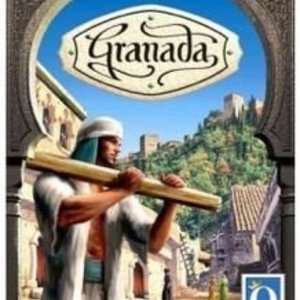
Granada
Tabletop Game
Granada – many artisans, traders and entire families have settled at the foot of the Sierra Nevada...
BoardGames VersionofAlhambra GatewayGames TileLayinggames
The Marinated Meeple (1853 KP) rated Beyond Balderdash in Tabletop Games
Mar 29, 2018
If you play the game as intended this is a 4 or 5 review... if you play my way this is an 8 or 9 depending on the people you are around. Hence the 7 score.
